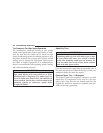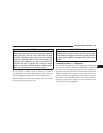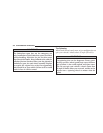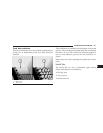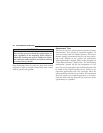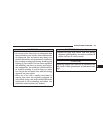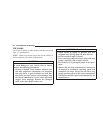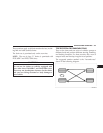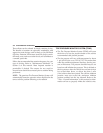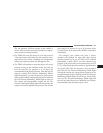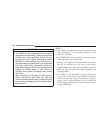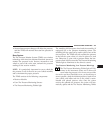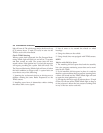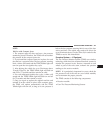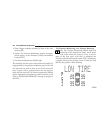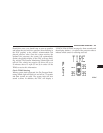
These effects can be reduced by timely rotation of tires.
The benefits of rotation are especially worthwhile with
aggressive tread designs such as those on On/Off-Road
type tires. Rotation will increase tread life, help to main-
tain mud, snow, and wet traction levels, and contribute to
a smooth, quiet ride.
Follow the recommended tire rotation frequency for your
type of driving. Refer to “Maintenance Schedules” in
Section 8 of this manual. More frequent rotation is
permissible if desired. The reasons for any rapid or
unusual wear should be corrected prior to rotation being
performed.
NOTE: The premium Tire Pressure Monitor System will
automatically locate the pressure values displayed in the
correct vehicle position following a tire rotation.
TIRE PRESSURE MONITOR SYSTEM (TPMS)
•
The Tire Pressure Monitor System (TPMS) will warn
the driver of a low tire pressure based on the vehicle
recommended cold placard pressure.
•
The tire pressure will vary with temperature by about
1 psi (6.9 kPa) for every 12°F (6.5°C). This means that
when the outside temperature decreases, the tire pres-
sure will decrease. Tire pressure should always be set
based on cold inflation tire pressure. This is defined as
the tire pressure after the vehicle has not been driven
for at least three hours, or driven less than 1 mile
(1 km) after a three hour period. The cold tire inflation
pressure must not exceed the maximum inflation
pressure molded into the tire sidewall. Refer to the
“Tires – General Information” in this section for infor-
mation on how to properly inflate the vehicle’s tires.
316 STARTING AND OPERATING



